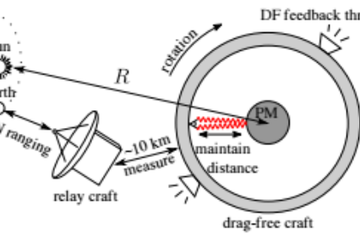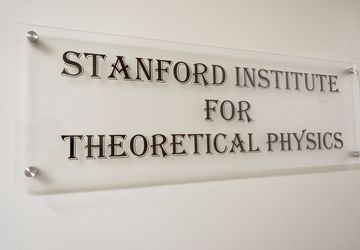Precision Frontiers
Precision measurement offers a powerful new approach for fundamental physics. This emerging field uses techniques such as atomic physics, laser interferometry, nuclear magnetic resonance, and sensitive magnetometry in search of fundamental particles and interactions. Potential applications include the observation of gravitational waves and the search for dark matter such as axions and other light fields.
SITP has been involved with proposing a variety of new experimental approaches to discover the basic laws of nature.
The search for dark matter is one of the central goals of modern physics. The detection of dark matter will have a dramatic impact on our understanding of the fundamental laws of nature. Dark matter cannot be explained within the Standard Model and so proves the existence of new physics. There are multiple experiments searching for heavier dark matter, but almost none searching for dark matter lighter than about an eV. The axion is the best known example but there is in fact a broad class of such dark matter candidates. SITP has been involved with proposing several new experiments to search for such dark matter.
For example, the Cosmic Axion Spin Precession Experiment (CASPEr) uses nuclear magnetic resonance and high precision magnetometry to detect axions over a wide range of masses that are unreachable by any other experiment. Such axions arise from physics at the highest known energy scales, around the grand unification (GUT), string, or Planck scales. CASPEr is currently under construction in Alex Sushkov and Dmitry Budker’s groups at Boston University and JGU Mainz.
The hidden photon is also a natural dark matter candidate. With Kent Irwin’s group, physicists at SITP proposed a new experiment to detect hidden photon dark matter over many orders of magnitude beyond current bounds. This experiment received initial funding from SLAC and KIPAC and is now under construction.
The observation of gravitational waves will open a new spectrum for observing the universe. Gravitational radiation may allow observation of a wide variety of sources, from known astrophysical ones such as black holes and neutron stars to speculative, but potentially revolutionary, cosmological ones such as inflation and reheating, cosmic strings, and early universe phase transitions. At SITP, working with Mark Kasevich and Jason Hogan’s groups, we invented a novel technique to detect gravitational waves using atom interferometry. Gravitational radiation will likely play a major role in the future of astronomy, astrophysics, and cosmology and atom interferometry may be a powerful tool for observing it.
These are a few examples of the possibilities for fundamental physics allowed by precision measurement techniques. As these technologies continue to advance they will have a significant impact on the search for new physics.
Related News

A team of Stanford physicists, including SITP members Peter Graham and Tim Wiser, have proposed a space mission that could detect or…
Related Events

Optically levitated microspheres are quantum-limited impulse sensors. In this talk, I will discuss their potential to discover MeV-scale, invisible states emitted in nuclear decays, including sterile neutrinos, axions, or other nucleon-coupled…

Pioneered in the 1950s by Hanbury Brown and Twiss, intensity interferometry refers to the correlation of light intensities incident on two telescopes. As its name suggests, it relies only on photon counting, allowing for interferometry with…